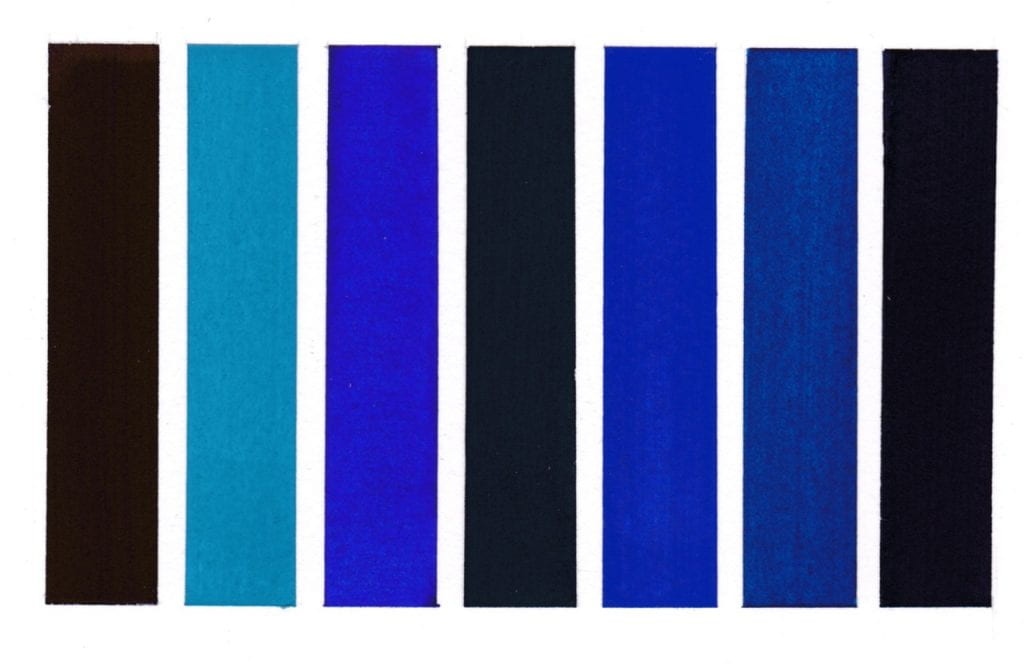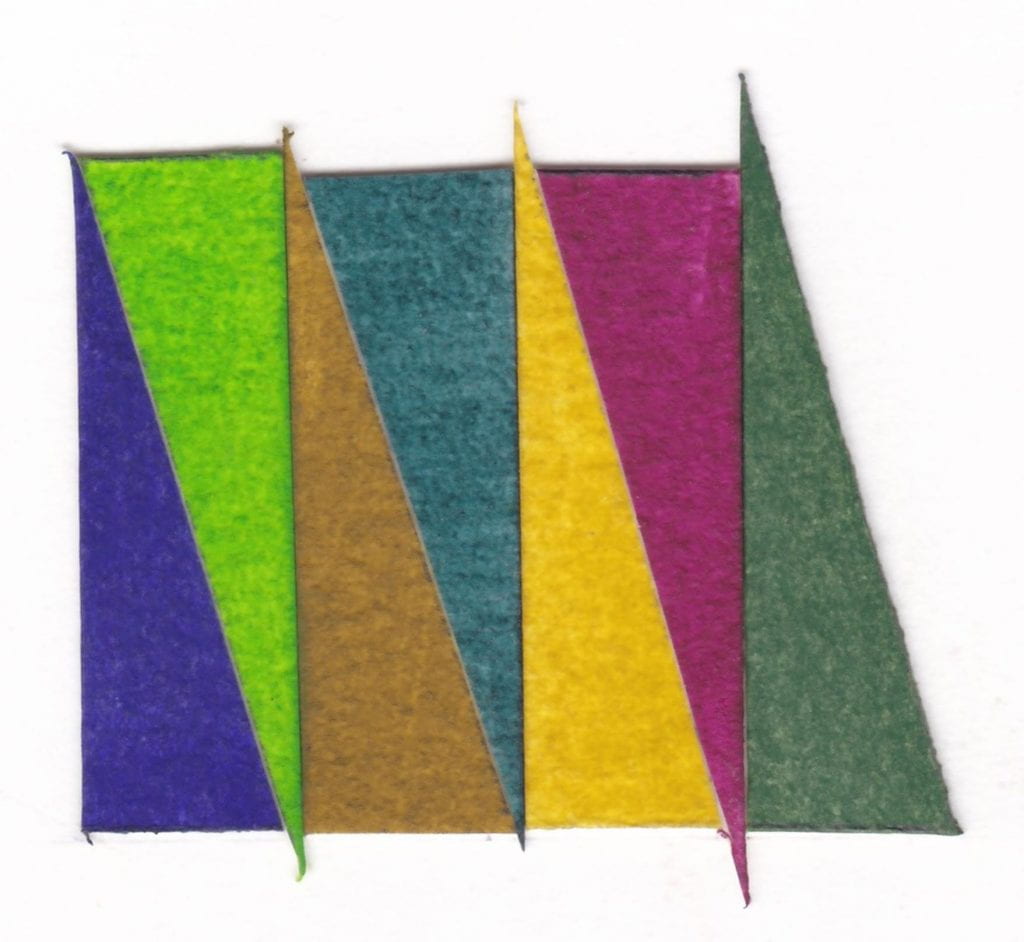Techniques used to analyse paints and pigments: a bibliography
By Ruth Siddall, on 25 April 2021
 Want to know more about how we analyse pigments and paints?? We can use a large range of techniques for analyses all of which have their advantages and disadvantages. For example some are more suited to inorganic pigments such as minerals and their synthetic equivalents, whereas others are more appropriate for the analysis of organic chemicals. Observational techniques such as reflected light and polarising light microscopy enable differentiation of crystalline phases with the same chemistry, for example, synthetic chalk and mineral chalk. These techniques can also be used to analyse lake pigments and non-crystalline phases too. Many techniques used by analytical chemists are appropriate for pigment analyses. The majority of these are based on spectroscopy or mass spectrometry which detects elements and compounds based on their molecular structure and the behaviour of bonds between atoms (ions) in these phases. It is always good practice to use a range of techniques for the analysis of pigments. Some techniques complement each other and using several techniques can extend the range of information concerning, provenance, manufacturing and application of materials. Listed here are a handful of publications (there are literally thousands out there in the scientific literature which tackle the analysis of artists’ pigments. The first section includes papers which introduce ‘classic’ techniques. The second section is a random selection of papers published in the last year or so which demonstrates the application of a range of techniques on a range of pigments and paints. Sadly, not all of the scientific literature is open access so some of you made need a institutional library subscription to access the full paper but always try googling the title in case its available via another platform. I’ve included DOI links where relevant. Also, not all books are available on line.
Want to know more about how we analyse pigments and paints?? We can use a large range of techniques for analyses all of which have their advantages and disadvantages. For example some are more suited to inorganic pigments such as minerals and their synthetic equivalents, whereas others are more appropriate for the analysis of organic chemicals. Observational techniques such as reflected light and polarising light microscopy enable differentiation of crystalline phases with the same chemistry, for example, synthetic chalk and mineral chalk. These techniques can also be used to analyse lake pigments and non-crystalline phases too. Many techniques used by analytical chemists are appropriate for pigment analyses. The majority of these are based on spectroscopy or mass spectrometry which detects elements and compounds based on their molecular structure and the behaviour of bonds between atoms (ions) in these phases. It is always good practice to use a range of techniques for the analysis of pigments. Some techniques complement each other and using several techniques can extend the range of information concerning, provenance, manufacturing and application of materials. Listed here are a handful of publications (there are literally thousands out there in the scientific literature which tackle the analysis of artists’ pigments. The first section includes papers which introduce ‘classic’ techniques. The second section is a random selection of papers published in the last year or so which demonstrates the application of a range of techniques on a range of pigments and paints. Sadly, not all of the scientific literature is open access so some of you made need a institutional library subscription to access the full paper but always try googling the title in case its available via another platform. I’ve included DOI links where relevant. Also, not all books are available on line.
Some books and papers on materials in paints, colour and analytical techniques
Bell, I. M., Clark, R. J. H. & Gibbs, P. J., 1997, Raman spectroscopic library of natural and synthetic pigments (pre ~ 1850 AD)., Spectrochimica Acta Part A 53, 2 159-2179. https://www.sciencedirect.com/science/article/pii/S1386142597001406
Burgio, L. & Clark, R. J. H., 2001, Library of FT-Raman spectra of pigments, minerals, pigment media and varnishes, and supplement to existing library of Raman spectra of pigments with visible excitation., Spectrochimica Acta Part A 57, 1491–1521. https://www.sciencedirect.com/science/article/pii/S1386142500004959
Cardon, D., 2007, Natural dyes: sources, tradition, technology and science., Archetype ublications, London, 778 pp.
Chiari, G. & Scott, D. A., 2004, Pigment analysis: potentialities and problems., Special Issue 3: A showcase of the Italian research in applied petrology., Periodico di Mineralogia., 73, 227-237. https://www.researchgate.net/publication/242485634_Pigment_analysis_Potentialities_and_problems
Christie, R. M., 2015, Colour Chemistry: 2nd Edition., Royal Society of Chemistry, Cambridge, 345 pp.
Clark, R. J. H., 2002, Pigment identification by spectroscopic means: an arts/science interface., C. R. Chimie 5, 7–20. https://www.sciencedirect.com/science/article/pii/S1631074802013413
Dyer, J. & Sotiropoulou, S., 2017, A technical step forward in the integration of visible-induced luminescence imaging methods for the study of ancient polychromy., Heritage Science, 5, 24 https://heritagesciencejournal.springeropen.com/track/pdf/10.1186/s40494-017-0137-2.pdf
Dyer, J., Verri, G. & Cupitt, J., 2013, Multispectral Imaging in reflectance and photo induced luminescence modes: a users manual., The British Museum, London., https://www.researchgate.net/publication/267266175_Multispectral_Imaging_in_Reflectance_and_Photo-induced_Luminescence_modes_A_User_Manual
Eastaugh, N., Walsh, V., Chaplin, T., & Siddall, R., 2004, The Pigment Compendium: Optical Microscopy of Historical Pigments. Elsevier – Butterworth Heinemen., 416 pp.
Eastaugh, N., Walsh, V., Chaplin, T., & Siddall, R., 2008, Pigment Compendium: A Dictionary and Optical Microscopy of Historic Pigments. (1st ed.). London: Butterworth-Heinemann., 958 pp.
Kirsch, A. & Levenson, R. S., 2000, Seeing through paintings: physical examination in art historical studies., Yale University Press, New Haven & London., 328 pp.
Mayer, R., 1991, The Artists’ Handbook of Materials and Techniques: 5th Edition., Faber & Faber, 761 pp.
Osticioli, I., Mendes, N. F. C., Nevin, A., Gil, F. P. S. C., Becucci, M. & Castelluci, E., 2009, Analysis of natural and artificial ultramarine blue pigments using laser induced breakdown and pulsed Raman spectroscopy, statistical analysis and light microscopy., Spectrochimica Acta Part A 73, 525–531. https://www.sciencedirect.com/science/article/abs/pii/S1386142508006446
Scott, D. A., 2002, Copper and Bronze in Art: corrosion, colorants, conservation., Getty Publications, Los Angeles., 515 pp.
Siddall, R. 2018, Mineral Pigments in Archaeology: Their Analysis and the Range of Available Materials., Minerals, 8 (5), 201, 35 pp. https://doi.org/10.3390/min8050201
Spizzichino, V., Angelini, F., Caneve, L., Colao, F., Corrias, R & Ruggiero, L., 2015, In situ study of modern synthetic materials and pigments in contemporary paintings by laser-induced fluorescence scanning, Studies in Conservation, 60, sup1, S178 S184. https://www.tandfonline.com/doi/full/10.1179/0039363015Z.000000000222
Taylor, P., 2015, Condition: the aging of art., Paul Holberton Publishing, London, 263 pp.
Some recent papers which demonstrate state of the art technology applied to the analysis of paints from different periods and using different materials, including some modern paint analyses.
Aguilar-Rodríguez, P., Mejía-Gonzalez, A., Zetina, S., Colin-Molina, A., Rodríguez-Molina, B. & Esturau-Escofet, N., 2021, Unexpected behavior of commercial artists’ acrylic paints under UVA artificial aging., Microchemical Journal 160, 105743. https://doi.org/10.1016/j.microc.2020.105743
Berthold, C., Zimmer, K. B., Scharf, O., Koch-Brinkmann, U. & Bente, K., 2017, Nondestructive, optical and X-ray analytics with high local resolution on Attic white-ground lekythoi., Journal of Archaeological Science: Reports, 16, 513–520. https://doi.org/10.1016/j.jasrep.2016.02.008
Ceccarelli, S., Guarner, M., Romani, M., Giacopini, L., Francucci, M., Ciaffi, M., Ferri De Collibus, M., Puiu, A., Verona-Rinati, G-L., Colao, F. & Fantoni, R., 2021, Are the blue daemons really blue? Multidisciplinary study for the colours characterization of the mural paintings inside the Blue Daemons Etruscan tomb., Journal of Cultural Heritage 47, 257–264. https://doi.org/10.1016/j.culher.2020.09.002
Huntley, J., Wallis, L. A., Stephenson, B., Karlka Nyiyaparli Aboriginal Corporation & Davis, A., 2021, A multi-technique approach to contextualising painted rock art in the Central Pilbara of Western Australia: Integrating in-field and laboratory methods., Quaternary International 572, 52–73. https://doi.org/10.1016/j.quaint.2020.05.032
La Nasa, J., Campanella, B., Sabatini, F., Rava, A., Shank, W., Lucero-Gomez, P., De Luca, D., Legnaioli, S., Palleschi, V., Colombini, M-P., Degano, I. & Modugno, F., 2021, 60 years of street art: A comparative study of the artists’ materials through spectroscopic and mass spectrometric approaches., Journal of Cultural Heritage 48, 129–140. https://doi.org/10.1016/j.culher.2020.11.016
Pozzi, F., Basso, E., Centeno, S. A., Smieska, L. M., Shibayama, N, Berns, R., Fontanella, M. & Stringari, L., 2021., Altered identity: fleeting colors and obscured surfaces in Van Gogh’s Landscapes in Paris, Arles, and Saint‑Rémy., Heritage Science, 9:15. https://doi.org/10.1186/s40494-021-00489-1
Steger, S., Stege, H., Bretz, S., & Hahn, O., 2021, Disclosing glittering and sparkling effects in 20th-century reverse glass paintings: a study of metallic pigments and metal foils by means of in situ XRF and DRIFTS analysis., Journal of Cultural Heritage 48, 196–204. https://doi.org/10.1016/j.culher.2020.11.008
 Close
Close








 *I first became aware of Yin MIn Blue in the summer of 2016 and wrote to the manufacturers requesting a sample for the Slade Material Research Project Pigment Collection but without luck. I then discovered a paint manufacturer in Australia, Derivan, were advertising it in their Matisse range as Oregon Blue and wrote a similar email asking for a donation. This is response from Steven Patterson, Derivan’s Chief Executive Officer that summer.
*I first became aware of Yin MIn Blue in the summer of 2016 and wrote to the manufacturers requesting a sample for the Slade Material Research Project Pigment Collection but without luck. I then discovered a paint manufacturer in Australia, Derivan, were advertising it in their Matisse range as Oregon Blue and wrote a similar email asking for a donation. This is response from Steven Patterson, Derivan’s Chief Executive Officer that summer.





